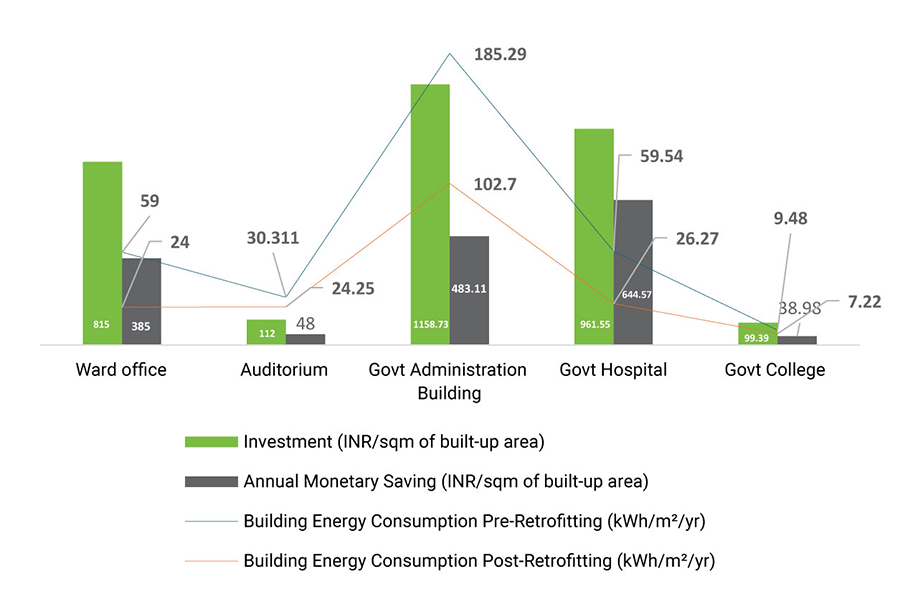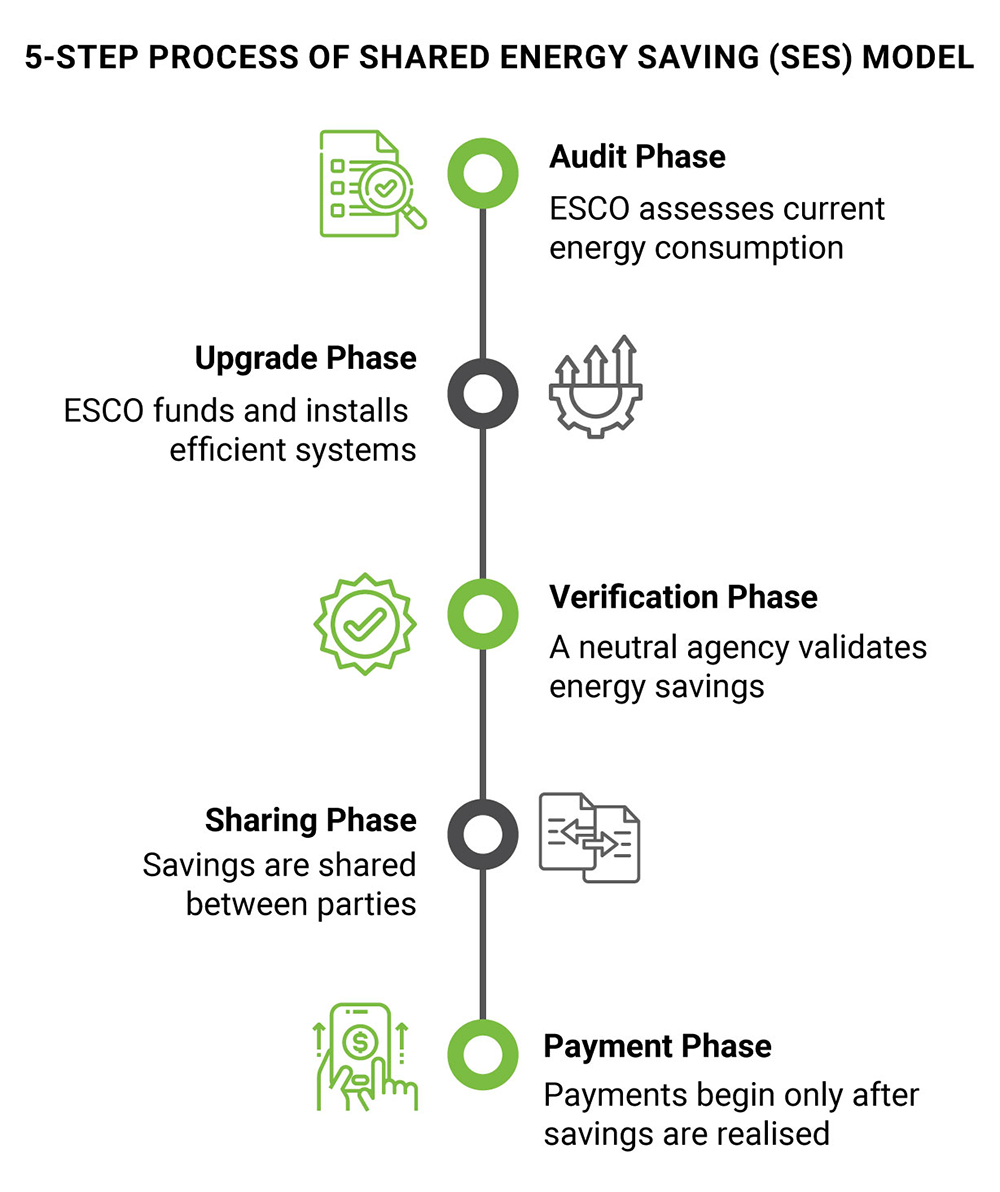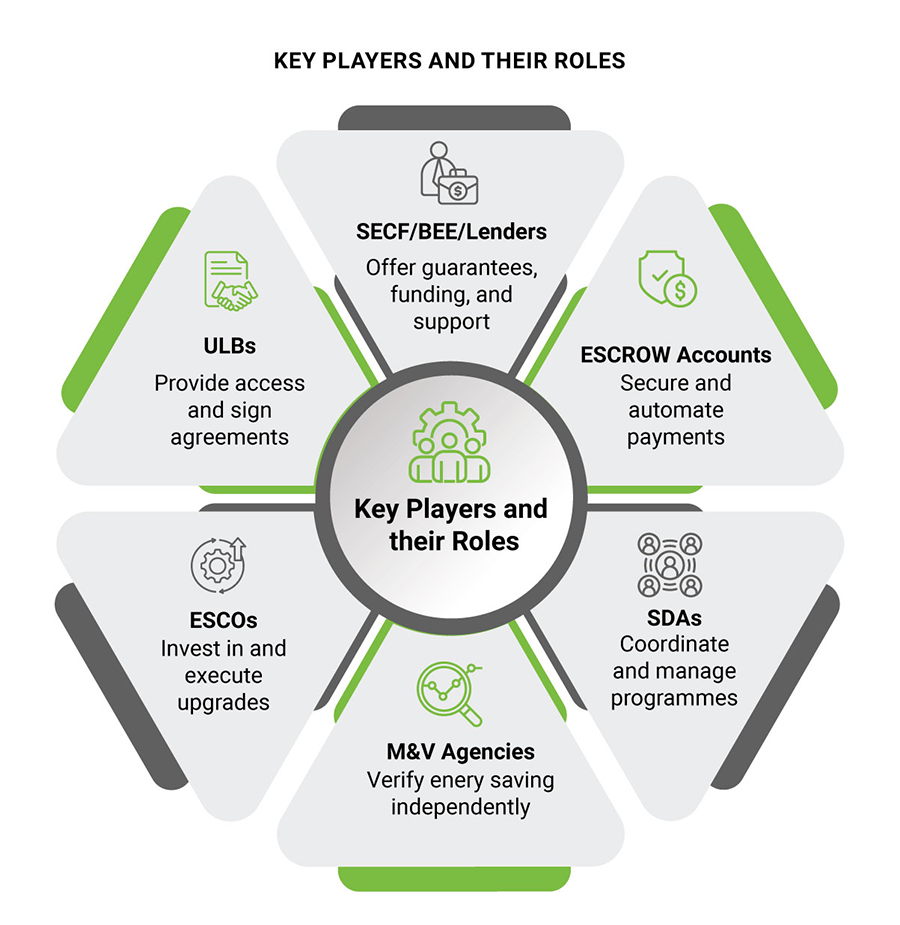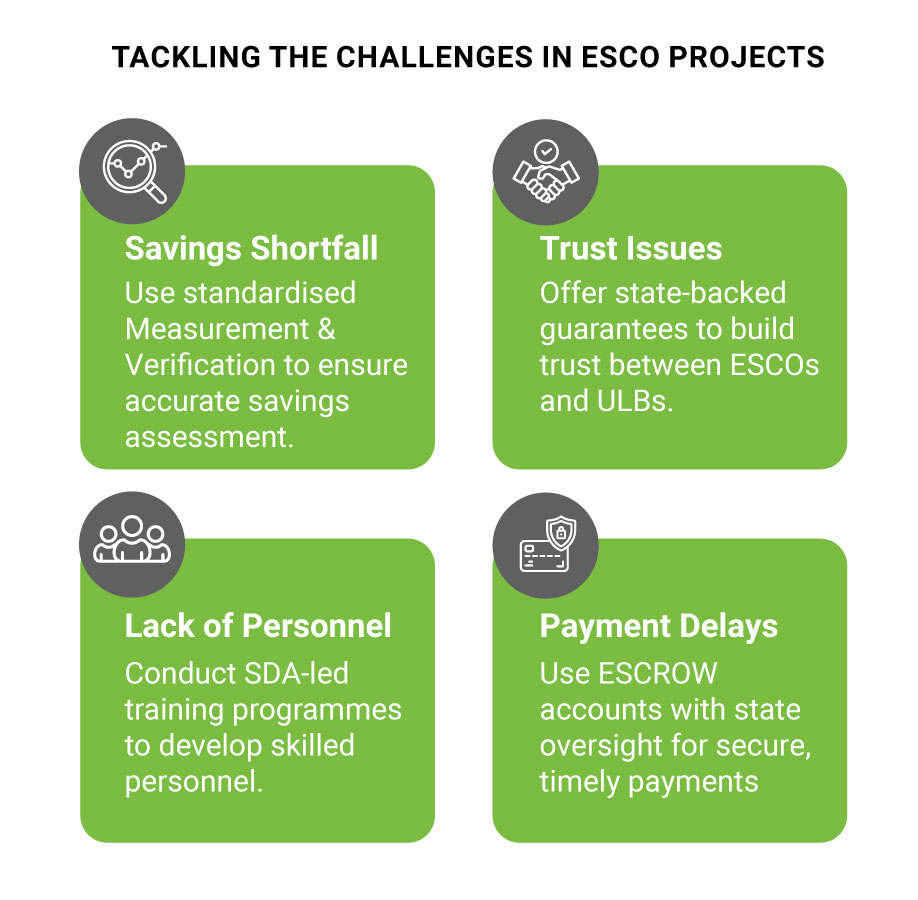We use cookies on this site to enhance your user experience.
By clicking the Accept button, you agree to us doing so.

25 Jun 2025
Magazine
Imagine a town hall where old tube lights buzz, ceiling fans run nonstop, and air conditioners work overtime. Now picture that same building – cooler, quieter, and cheaper to operate – after a few smart upgrades. That’s the promise of energy efficiency.
Retrofitting old buildings is one of the smartest and most affordable ways to cut energy use. Swapping out outdated systems like lighting or appliances can trim energy bills by 10-15%. Go deeper with efficient HVACs, and building envelope upgrades, and savings can jump to 30-40%[1]. Add rooftop solar or other renewables, and the impact multiplies. Lower costs, healthier spaces, fewer emissions – all without waiting for a bigger budget.
The snapshot below breaks down how different municipal buildings stack up, showing energy use before and after retrofits, what the upgrades cost, and how much money they’re now saving each year.
 Figure 1 – Analysis of Building retrofits in Government Buildings2
Figure 1 – Analysis of Building retrofits in Government Buildings2
Note: The values of Building Energy Consumption (Pre and Post Retrofitting have been provided in bold.)
While retrofitting saves electricity and emissions, municipalities, schools, and hospitals can’t always afford it.
The SES model flips the script. It uses future energy savings to finance upgrades, eliminating the need for upfront capital.
Here’s how it works:
The process can be summarised in the following five steps:

Urban Local Bodies (ULBs) manage energy-intensive assets, including schools, hospitals, and offices.
The SES model helps them by offering:
To scale the SES model, state-level support is key. State Designated Agencies (SDAs) can serve as connectors between ULBs, ESCOs, and financiers.
With the right policies and frameworks in place, SDAs can:

This model isn’t just theory, it’s delivering results:
Most states already have a State Energy Conservation Fund (SECF) – a powerful tool. With the right approach, SECFs can guarantee payments, frontload retrofit costs, and ease municipal participation. The goal: turn them into revolving funds that back large-scale upgrades like shared cooling and ESCO-led savings models. But to get there, SECFs need a larger corpus and rules that allow flexible, performance-based financing.
At the national level, the Bureau of Energy Efficiency (BEE) is laying the foundation. From co-funding audits and offering ready-to-use templates to guiding states through technical hurdles, BEE plays the quiet enabler. It builds confidence through training, pilots, and playbooks – helping states move from intention to action.
The infographic below breaks down how state and national support mechanisms can step in – filling funding gaps, managing risk, and building up capacity to help ESCO projects succeed.

To lead the way, states can:
Whether it’s a city hospital or government school, the SES model offers a no-risk, no-debt path to modernisation. It benefits:
Shared Energy Savings isn’t just a financing tool – it’s a smart strategy to modernise public infrastructure without burdening public budgets. With proven results, supportive policies, and scalable models, the path forward is clear.
By aligning financial innovation with environmental action, states and cities can accelerate the shift to cleaner, more efficient public buildings. The groundwork is laid. What comes next is simply implementation – step by step, building by building.
